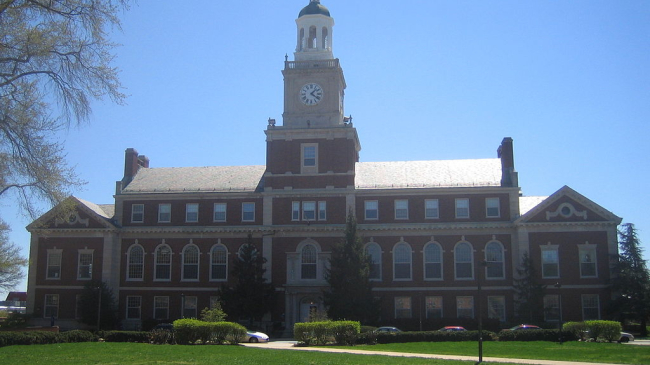Remote sensing is the use of instruments attached to satellites or aircraft that actively or passively sense the Earth’s land and water surfaces from space. To prepare the next generation of remote sensing scientists, NOAA encourages students to pursue studies and engage in hands-on research and experiential learning opportunities which are geared toward working with the satellites that support NOAA’s mission.

Vice Adm. Manson Brown talks with Cassandra Calderon, a student with the Joint Polar Satellite System (JPSS) Students Professional and Academic Readiness with Knowledge in Satellites (SPARKS) program in summer 2016. (Image credit: Shakila Merchant/NOAA-CREST)
Four NOAA CREST students — David Melecio-Vazquez, Elius Etienne, Cassandra Calderella, and Ivan Valerio — participated in the Joint Polar Satellite System (JPSS) Students Professional and Academic Readiness with Knowledge in Satellites (SPARKS) program in summer 2016. JPSS delivers key global observations that are used for forecasting severe weather like hurricanes, tornadoes and blizzards days in advance, and assessing environmental hazards such as droughts, forest fires, poor air quality and harmful coastal waters. This education program introduces students to the JPSS mission, products, pioneering research from the state-of-the-art instruments, and use of these products for weather, climate and ocean applications. The students learned about research-to-operations concepts; programming languages; data formats; industry-government liaison requirements and verification; enterprise systems and configurations.
NOAA is also training high school students through an in-depth internship at the University of Maryland offsite link. Kayla Brown completed a year-long high school internship in College Park under NOAA Satellite and Information Service scientist, Dr. Scott Rudlosky. Now a graduate from Eleanor Roosevelt High School in Greenbelt, Maryland, Kayla has chosen to study meteorology at the University of Maryland beginning in fall 2016. Although she was unaware of the field of meteorology before her internship, Kayla will continue working in the lab as her career takes shape. Matthew Bielec, Kayla’s predecessor, completed his freshman year at the University of Maryland. He is working in the same lab, building a camera that will automatically photograph lightning to help validate satellite observations.
These outreach efforts help develop college graduates with remote sensing experience ready to staff future NOAA satellite activities as support contractors and civil servants.
This story was provided by NOAA's Satellite and Information Service, a member of the NOAA Education Council, as part of our ongoing effort to share education accomplishments from across NOAA.



